As I write this, we are partway into the 31-hour train journey from Ulaan Bator to Beijing – plenty of time to reflect on our Mongolian experience. It’s been an interesting three weeks and I’ve really enjoyed what we’ve seen and done. Mongolia is quite different from anywhere I’ve been before in many respects.
The country is 1.5 million square kilometres (making it a tad smaller than Alaska) with a population of just under 3 million. However almost half of that population live in the capital, Ulaan Bator. That means there’s an awful lot of emptiness out there and not many next-door neighbours. The capital Ulaan Bator (referred to locally as UB) feels like a bit of a Soviet throwback with communist-era style buildings. The Mongolian language is based on Cyrillic and thus looks similar to Russian which also adds to that feeling. Compared to the rest of the country, you would have to describe the city as modern although that is really a bit of an over-statement. The roads are terrible and because the city has grown beyond the expectations of the original town planners, traffic is really congested. But at least UB has roads, unlike the rest of the country.
However, the reason for visiting Mongolia is to get out of the city and into the “countryside” where everywhere is in the middle of nowhere. So that’s what we did. Public transport is limited and time-consuming and only gets you to small towns rather than the remote rural areas, so we opted, as most travellers do, to group up and share the cost of a rickety old Russian jeep and driver.
As soon as you hit the city limits the terrain changes dramatically – roads and buildings disappear and the vast emptiness looms ahead. We hit the 4WD tracks with a series of bumps and jolts which were to become the norm for the days ahead. For the best part, Mongolia’s terrain consists of gently rolling hills and grasslands but there are also regions of more dramatic scenery especially in the southern regions of the Gobi Desert where there are dramatic rock formations and valleys and impressive sands dunes. The road journeys can be a bit tedious, uncomfortable even, but for me they were worth it. For Mark, this was a bit more retrospective.
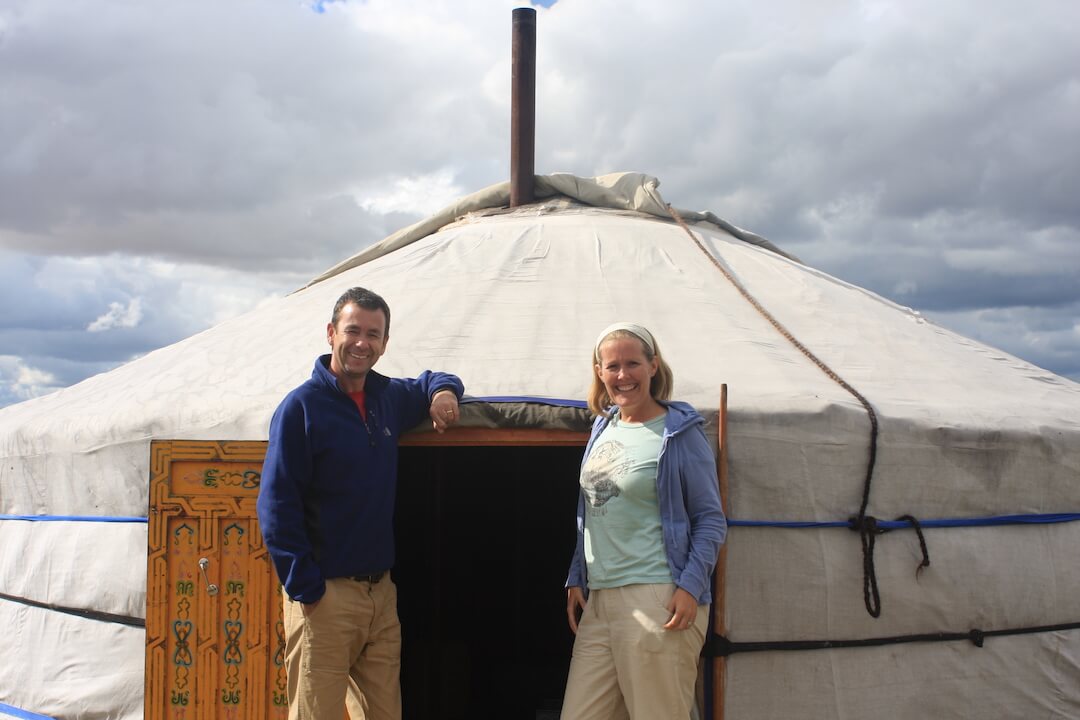 Mongol Els
Mongol Els
In rural Mongolia people live in gers (or yurts); circular tents with a wooden trestle frame covered in felt and with conical roofs. The whole family will live in one ger although many families have two gers; one for living/cooking/sleeping and an additional one where family overflow will sleep. It is normal for three generations to share a ger which vary in size and have up to six single beds around the edge. In the centre is a wood-burning stove with a pipe letting out the smoke through the centre of the roof. Aside from beds, the only other furniture will be a low table with dinky stools and a dresser cum family altar. Altar implies too strong a religious connection as it is really just a place where family photos, certificates, goat herding medals, etc are displayed. The walls are frequently decorated with colourful woven rugs (which also help keep the place warm). The families who live in gers on the plains are true nomads moving their homes four times a year. The harsh climate doesn’t allow them to grow any fruit or vegetables so their diet mostly consists of what is produced by their animals – goats, horses and sometimes sheep. They may occasionally buy some rice or potatoes and carrots to supplement if they can afford to or if they live close enough to a settlement. This means that in the summer they will mostly live on dairy products – milk, yoghurt, cheese – and in the winter, the meat of the animals. In the winter the children will usually attend a school where they board and then spend the summer – around 4-5 months – with their family. There’s little in the way of home comforts, what we would consider basic amenities. There’s no electricity except for the odd car battery linked up to a light bulb; no phones except maybe a weak mobile signal; no bathroom or running water, just what they can collect from streams. For the toilet, sometimes there is a pit with a couple of planks across it for your feet, with either a bit of cloth or a makeshift shed around it. But sometimes you just have to go completely bush, commando-style. Except there aren’t any bushes! Once you accept the mindset of not being able to wash for days on end you get used to it (kind of) and everyone is in the same boat. No cars; horses are the local transport (Mongolians are superb horsemen) and you see small children jumping on and off and riding horses as if they were bicycles.
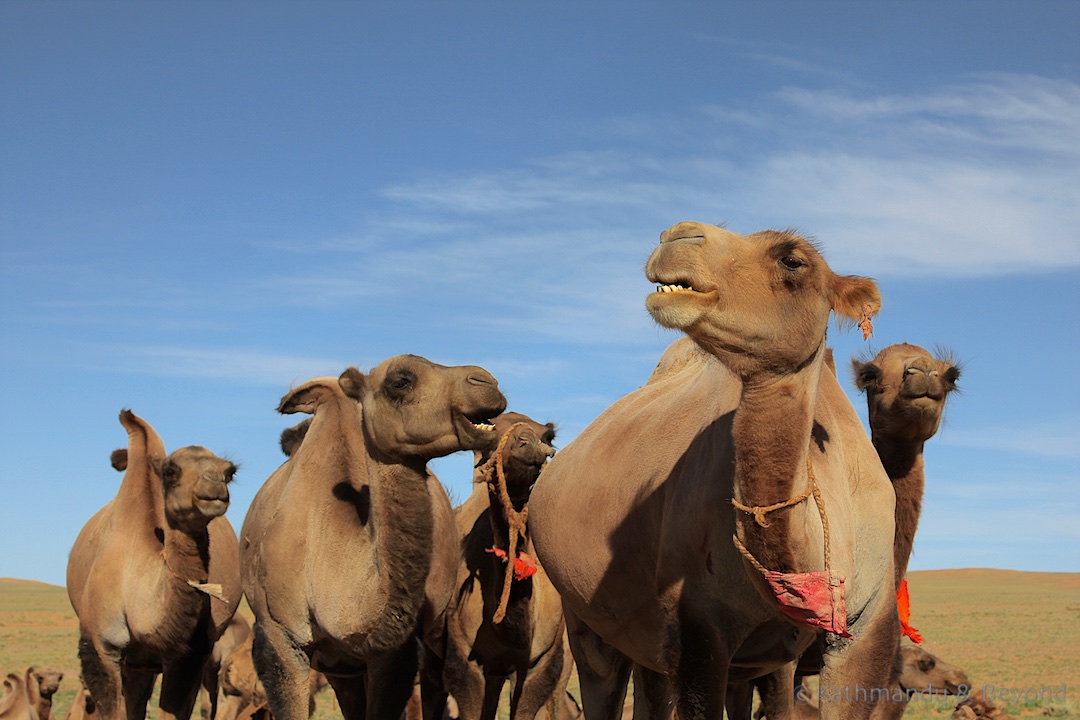 Tsagaan Suvraga
Tsagaan Suvraga
So, it was a taste of this nomadic lifestyle we were to experience. The only thing we got away with was not having to live completely on the Mongolian diet as we carried our own food and our guide cooked for us; although the ingredients were a bit repetitive – dry bread and chocolate spread for breakfast and something made out of pasta, potatoes, carrots and tinned meat or fresh goat for dinner, although a couple of nights we were lucky enough to have marmot as an alternative. The tipple of choice is airag which is fermented mare’s milk. Even the fact that is has an alcohol content of around 3% was not enough to convince me to take more than a couple of sips out of politeness. The taste is indescribably disgusting. Mark chickened out altogether, sticking to the story that he is allergic to dairy products, also so that he didn’t have to eat any sheep cheese!
Most of the time we were in the middle of nowhere although every now and again we’d come across “civilisation” and stop in a small town. They’re strange places – often half deserted and with a real cowboy town feel to them. But they gave us the chance to stock up on nuts, chocolate and biscuits in the local store or maybe have a lunch of greasy meat pie – a typical Mongolian dish which tastes nicer than it sounds especially with chilli sauce to accompany it (of which we bought several bottles with us from UB).
We were also lucky enough to be in Mongolia for the annual Nadaam festival (OK not so lucky as we planned it!). But we were fortunate to see the festival in and out of UB which are completely different experiences. The main events are horse racing, wrestling and archery. The wrestling is particularly fascinating even if the rules are a bit complicated. Rather than write about all the places we visited I will again let the pictures tell our stories (partly because we are now in Tibet having completed a 45-hour train journey from Beijing to Lhasa so I need to get it posted!).
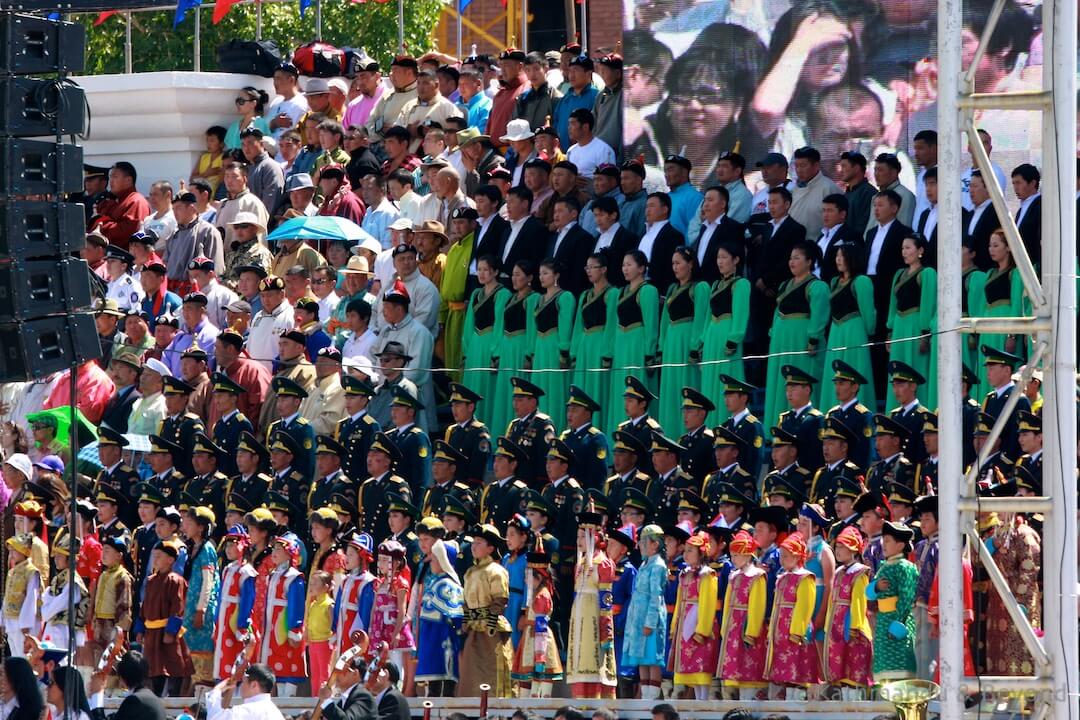 Naadam Festival, Ulaan Baatar
Naadam Festival, Ulaan Baatar
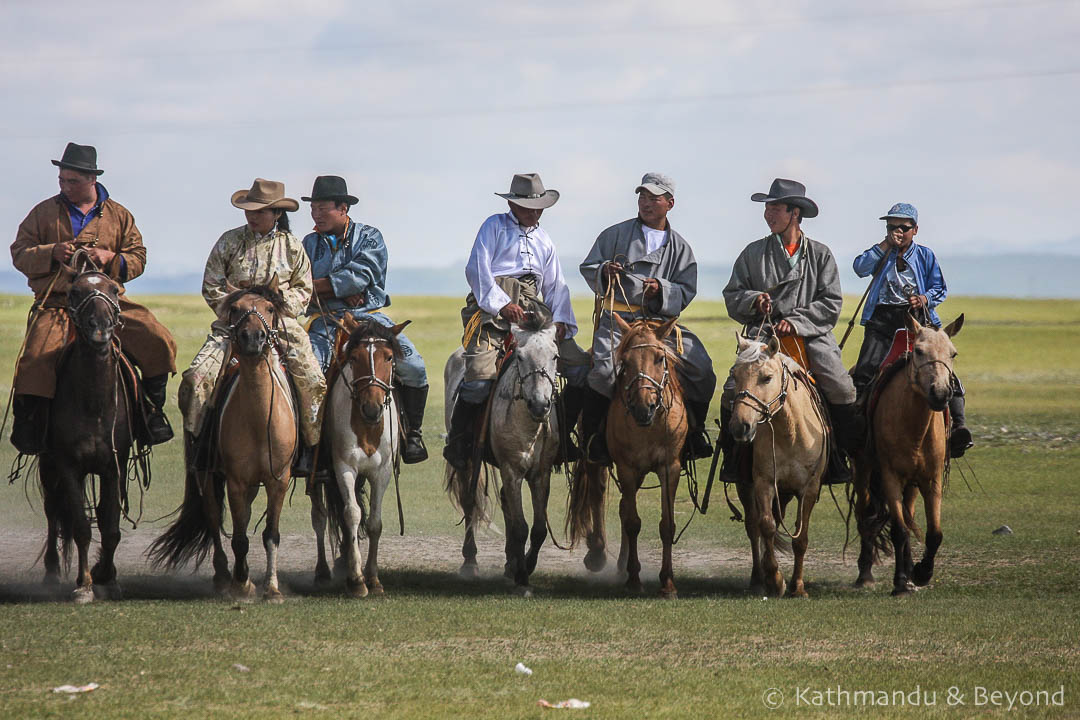 Naadam Festival, Kharkhorin
Naadam Festival, Kharkhorin
To sum up, Mongolia is quite awe-inspiring and an amazing experience. The vast open spaces are incredible and coming back to the city was quite a shock after a week in the countryside. From being in the middle of nowhere, all of a sudden this sprawl of one-million-plus is right ahead of you. And you can immediately notice the disappearance of the fresh air! We were all quite excited about getting back to the city as life even as a temporary nomad is harsh. But once I had showered, had an Indian curry and a few cold beers I was already missing my ger!
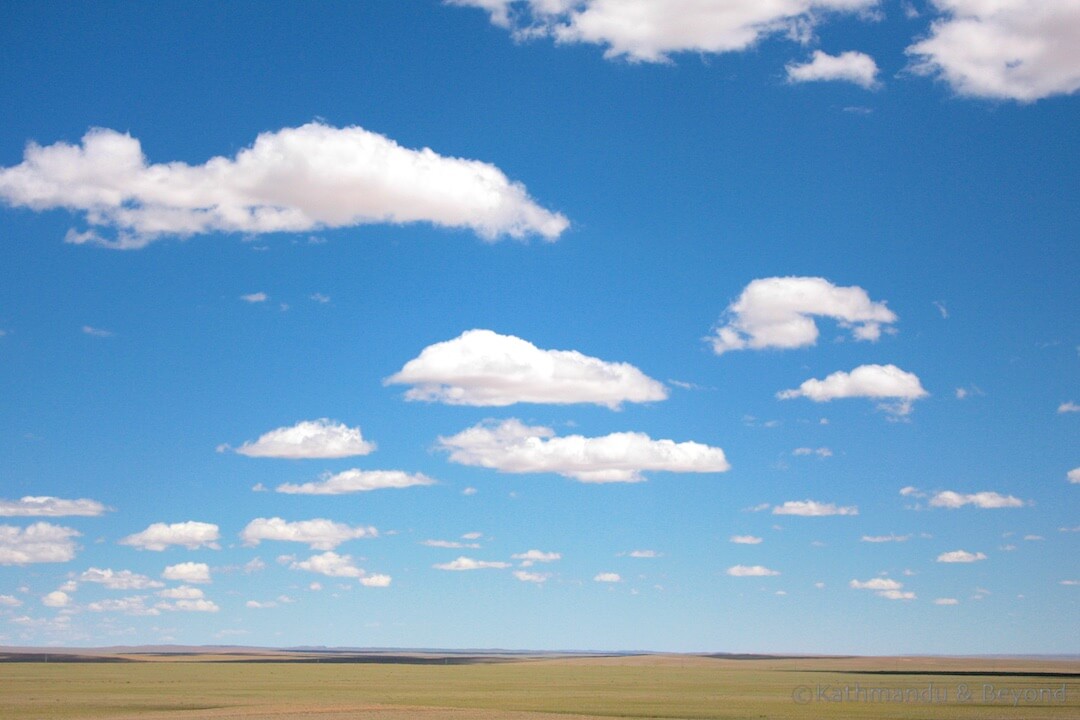
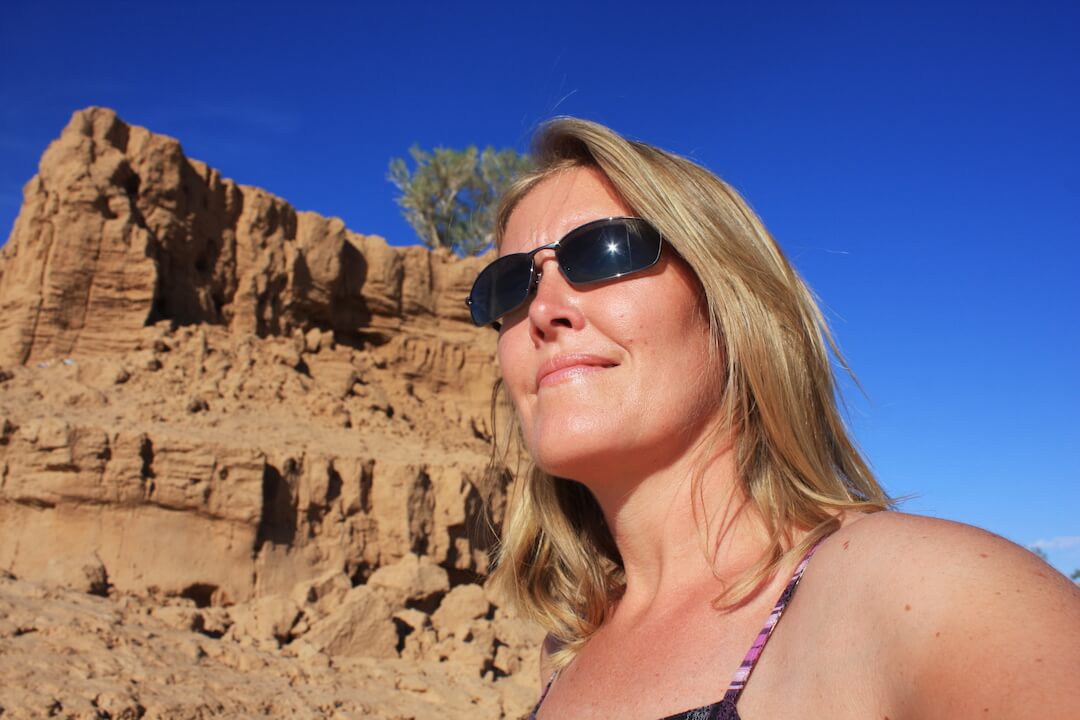
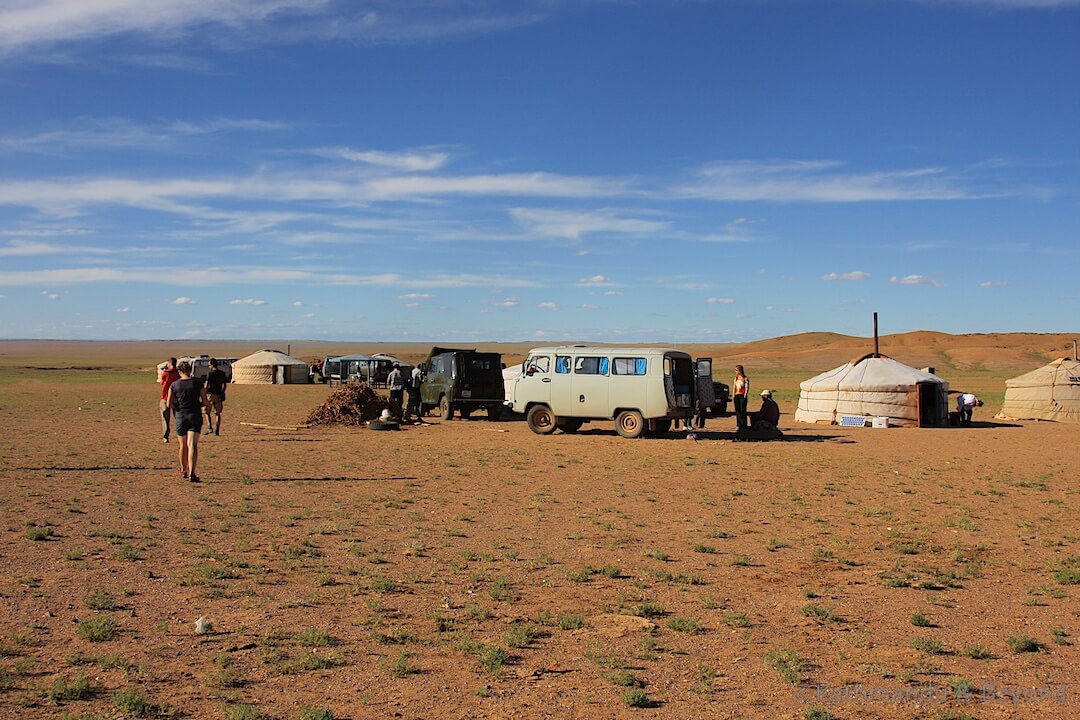
Above: Somewhere en route between Baga Gazryn Chuluu and Tsagaan Suvraga (left), Bayanzag (centre) and Tsagaan Suvraga (right)
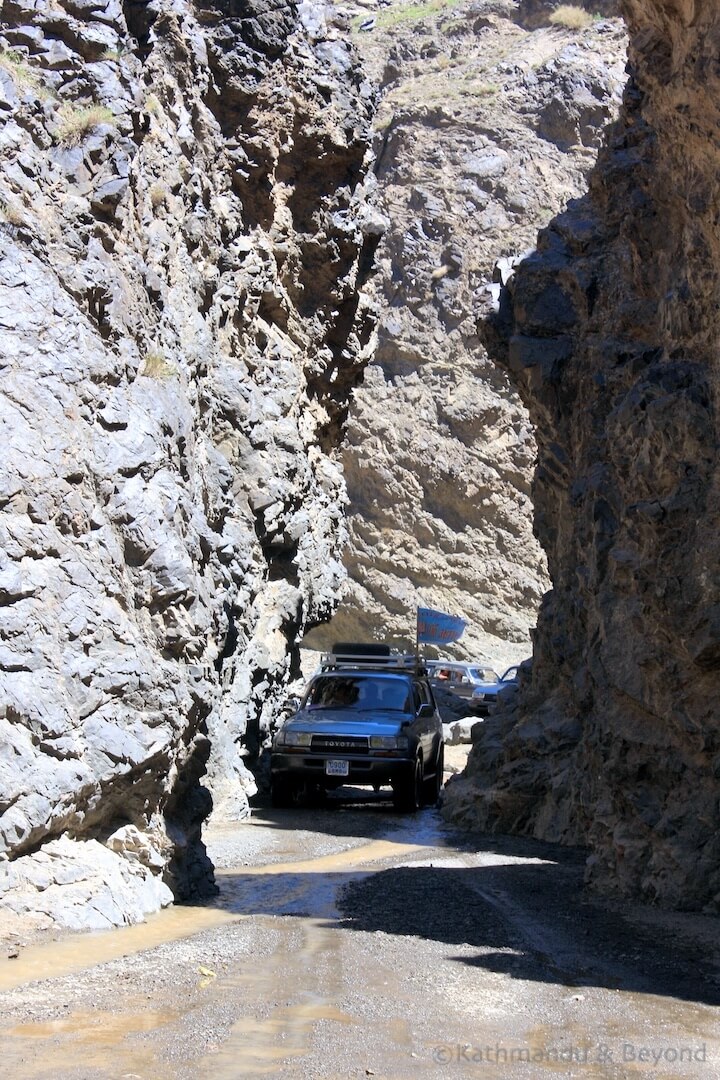
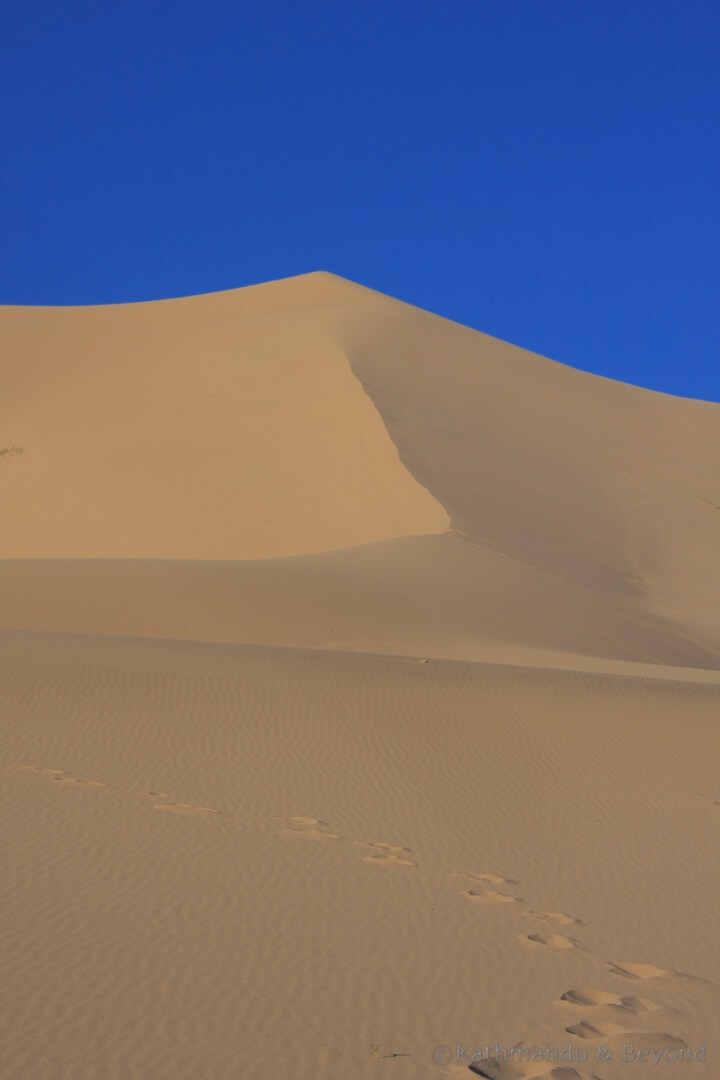
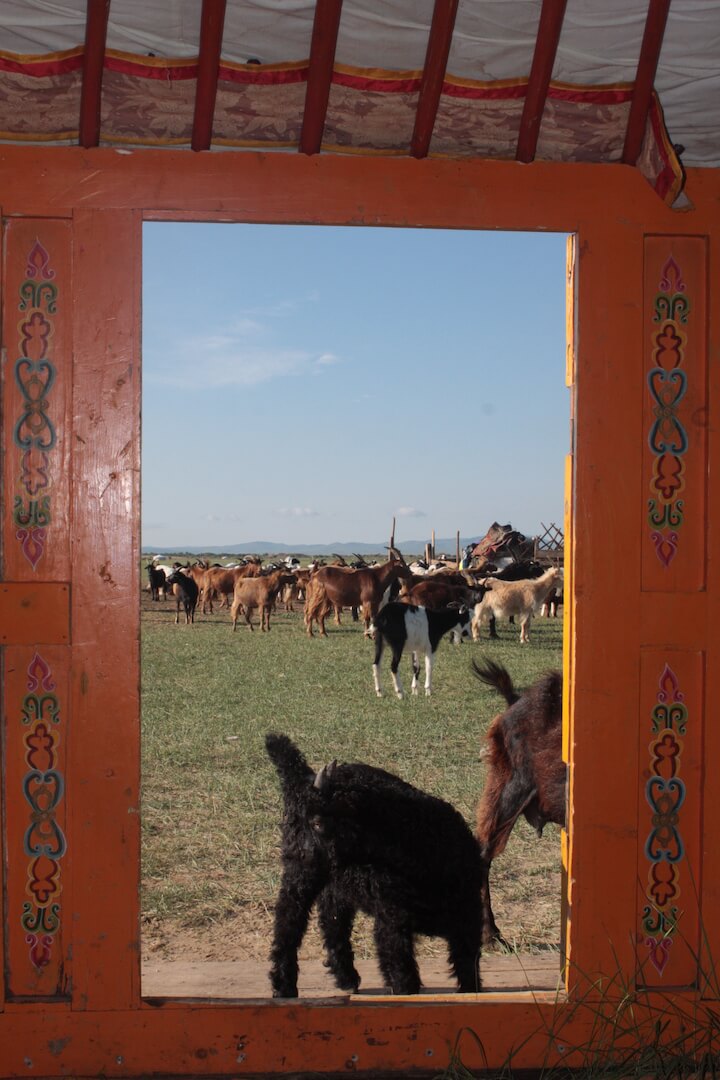
Above: Somewhere en route between Yolyn Am and Khongoryn Els (left), Khongoryn Els (centre) and Mongal Els (right)
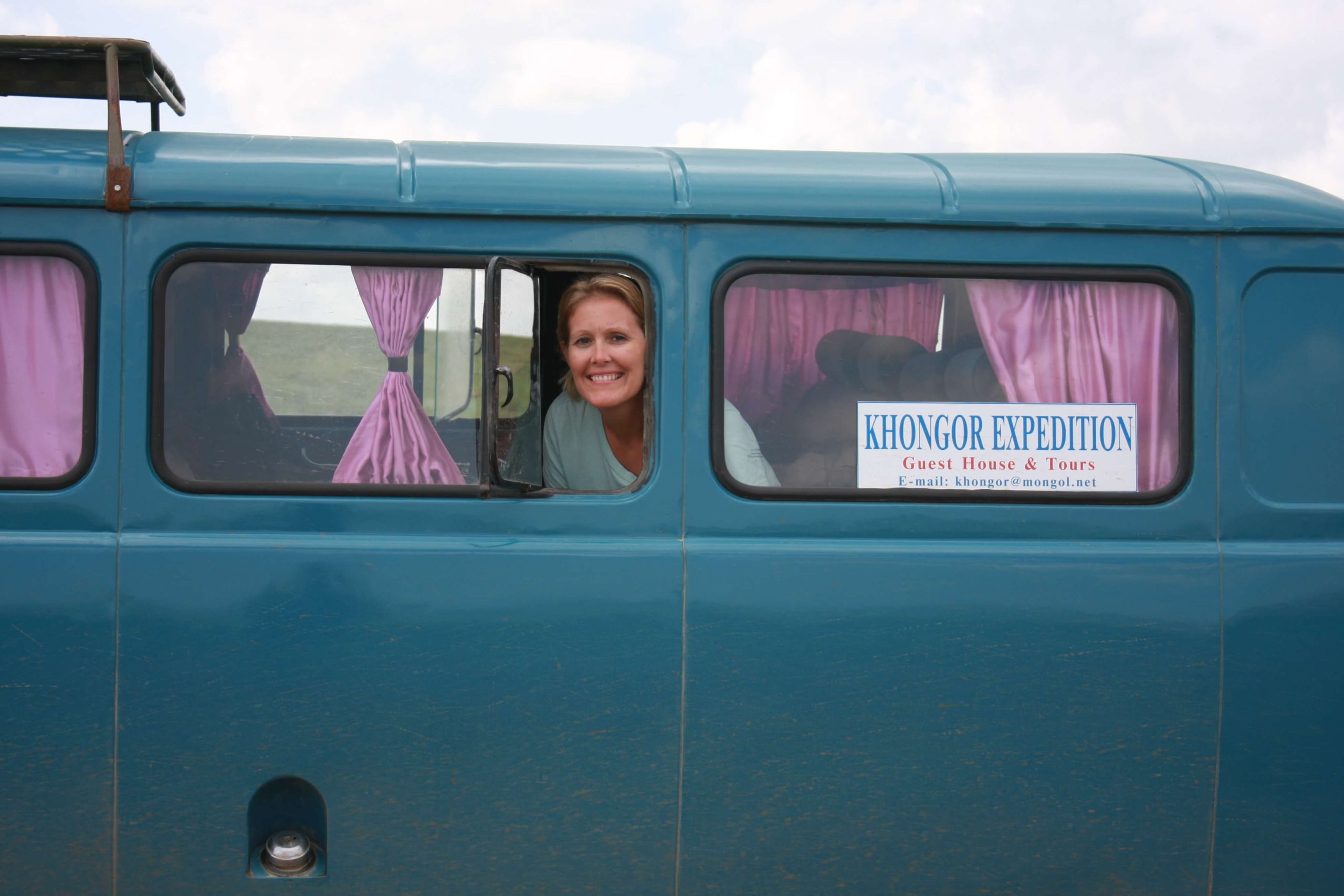
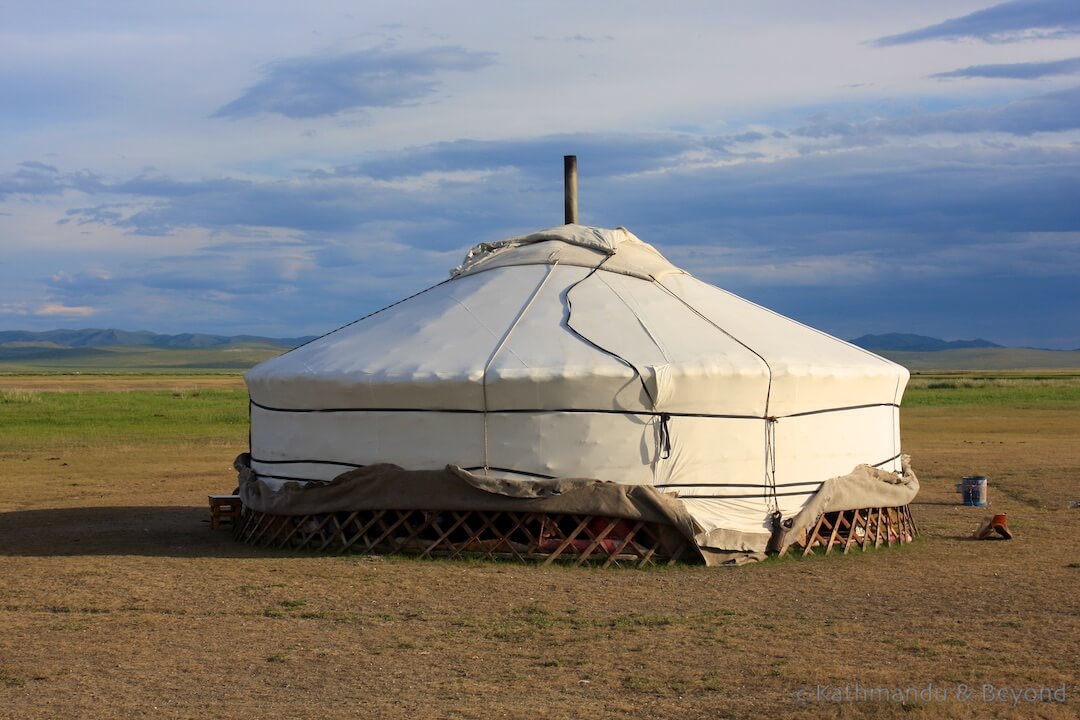
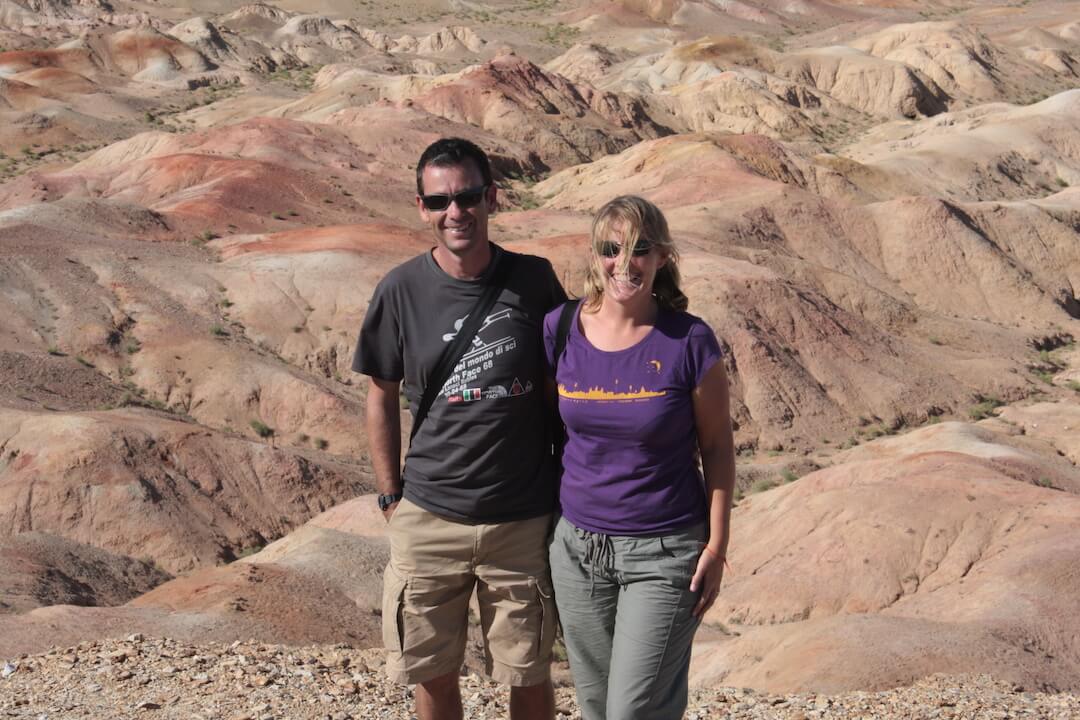
Above: Somewhere en route between Ulaan Baatar and Baga Gazryn Chuluu (left), Lun (centre) and Tsagaan Suvraga (right)
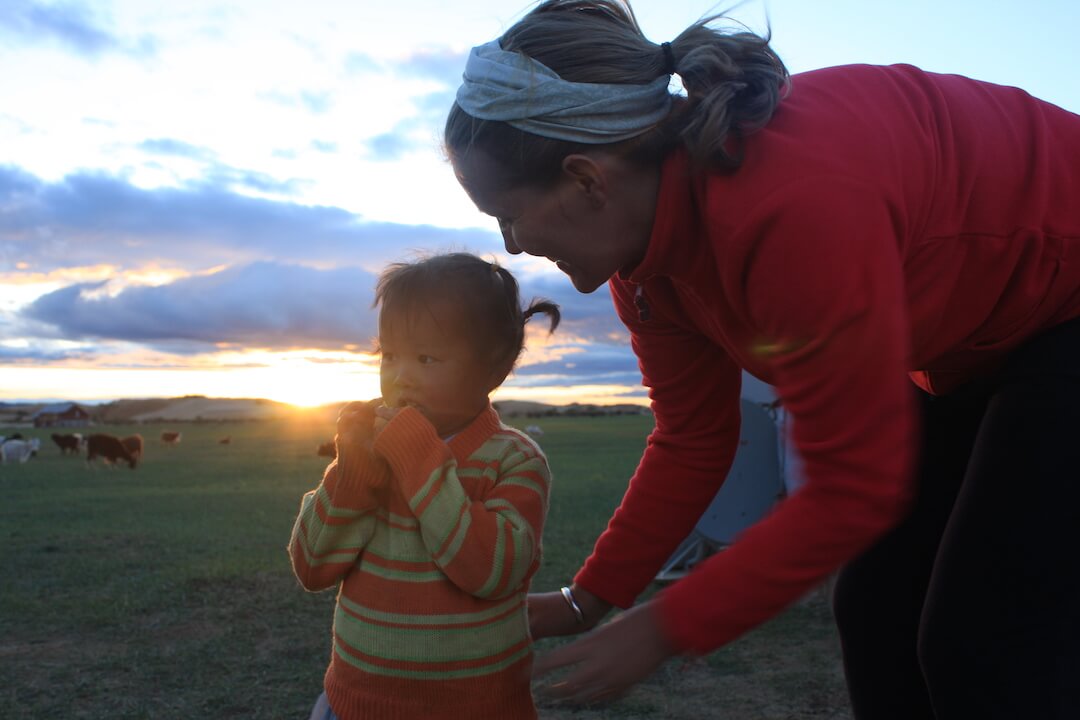
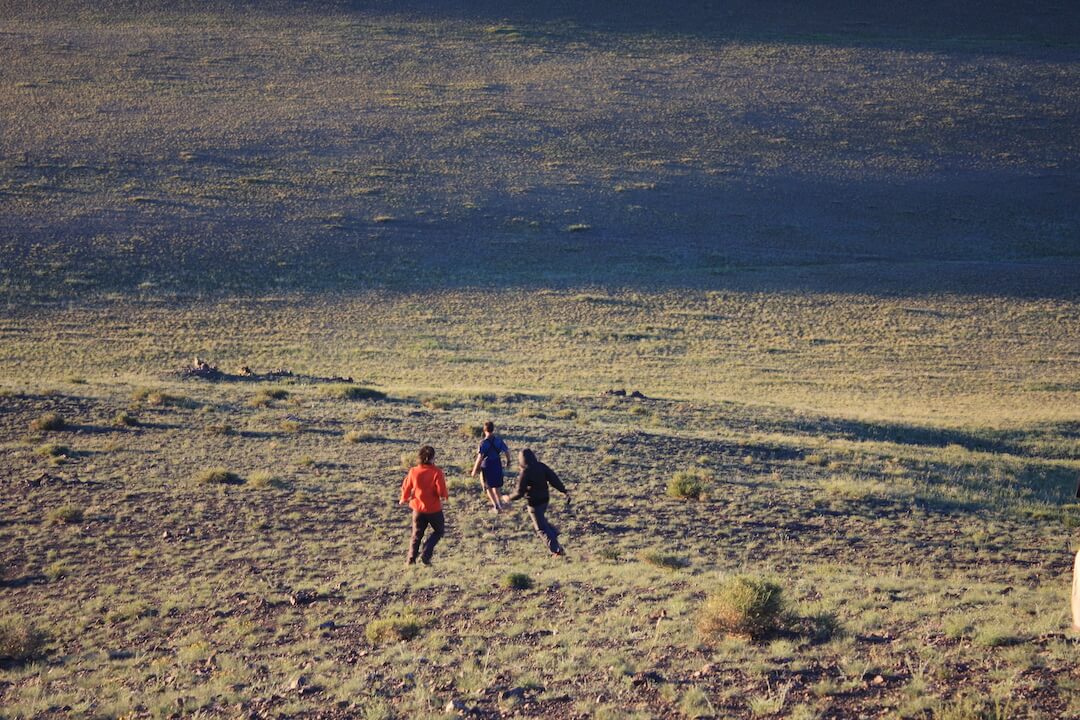
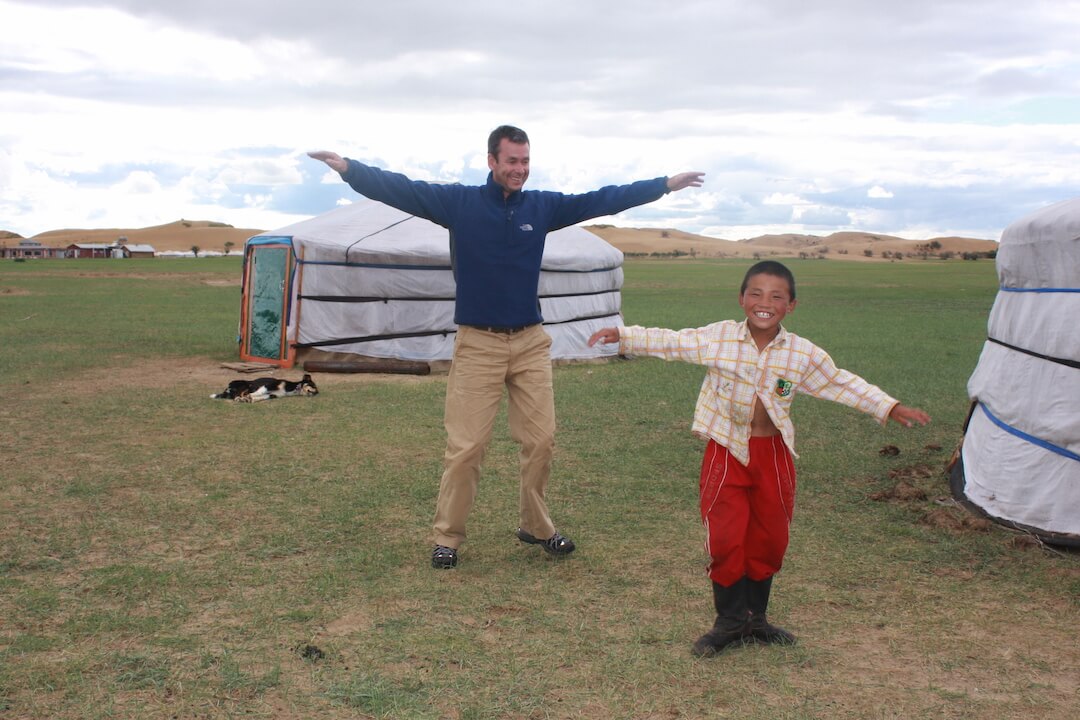
Above: Mongol Els (left and right) and Yolyn Am (centre)
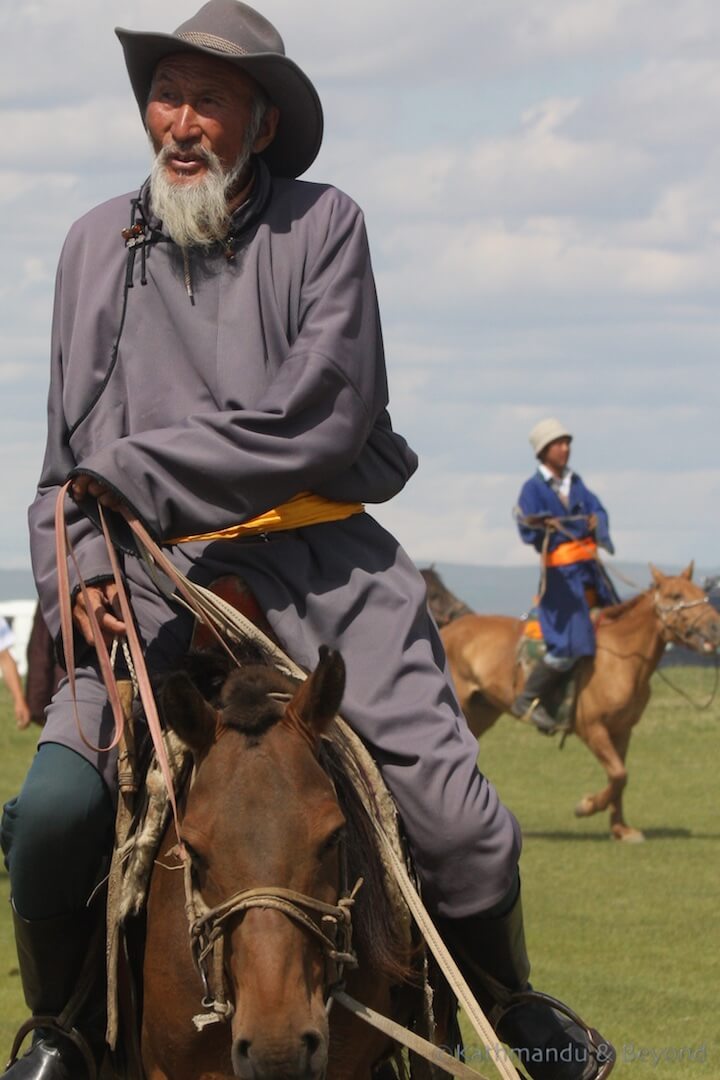
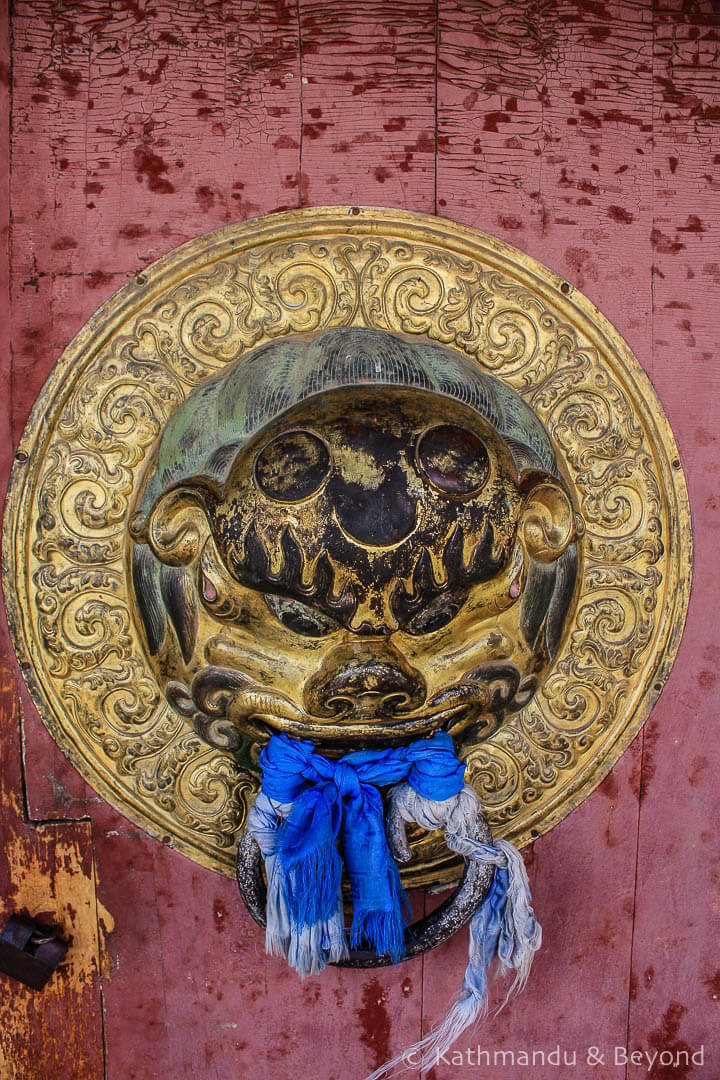
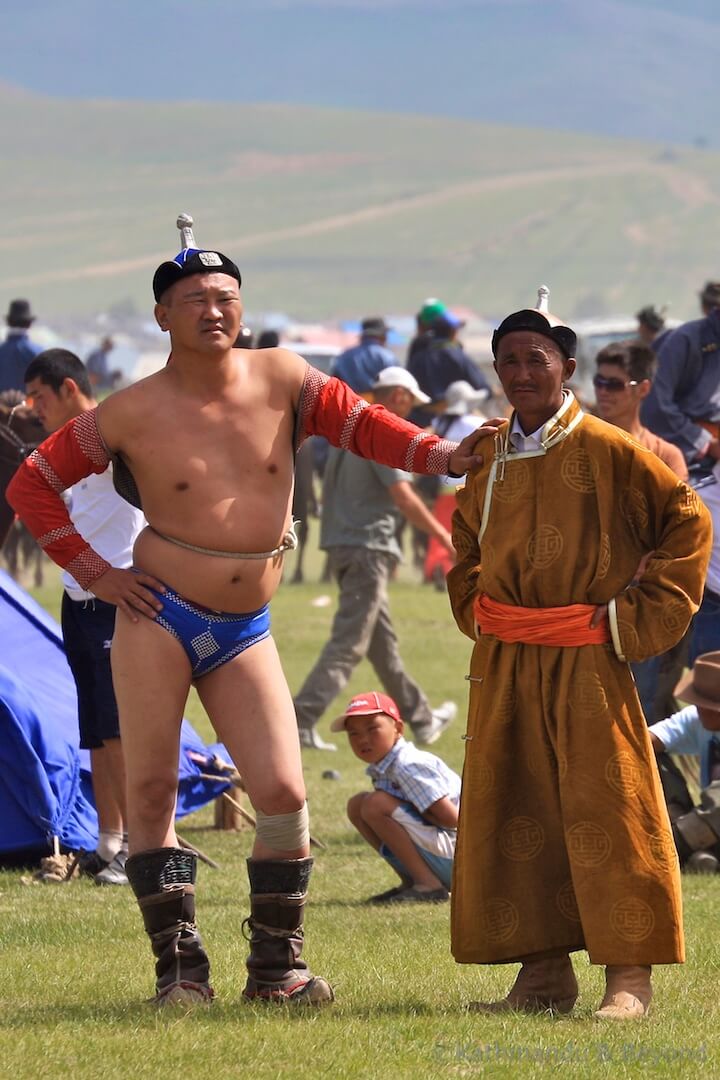
Above: Naadam Festival, Kharkhorin (left and right) and Erdene Zuu Khid, Kharkhorin (centre)

Trackbacks/Pingbacks